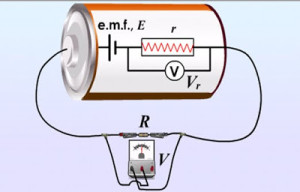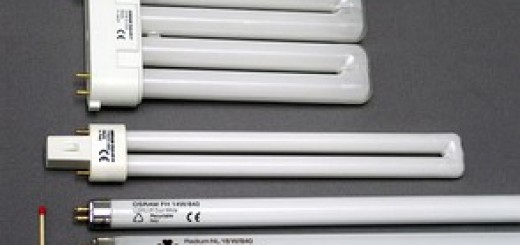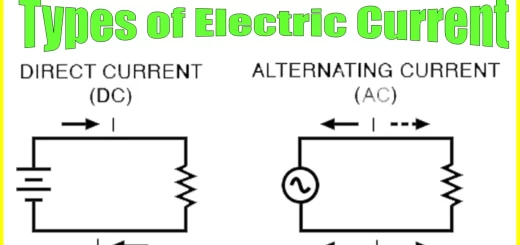Electric potential difference and the electromotive force
Electric potential difference of a conductor
The electric potential of a conductor is the state of an electric conductor that shows the transfer of electricity to and from it when it is connected to another conductor, It is from the physical properties of the electric current.
If two charged conductors touch or are connected with a wire, where conductor (A) has electric potential higher than the other conductor (B), Electric energy (in the form of electric current) will flow from (A) to (B) until their electric potential becomes equal.
The transference of charges does not depend on their amount, But it depends on the difference in their potential, When two conductors have the same electric potential and they are connected by a wire, No electric current will pass through them, because there is no potential difference between them (the potential difference equals zero).
The potential difference across two terminals of a conductor is the value of the work done to transfer a quantity of charge (one coulomb) between the two poles of this conductors, The potential difference measuring unit is the volt, The measuring unit of the work is the Joule, and the measuring unit of electricity is the Coulomb.
Potential difference ( V ) = Work ( W ) / Amount ( quantity ) of electricity ( q )
1 Volt = 1 Joule / 1 Coulomb
The volt is the potential difference across two terminals of the conductor on doing the work of one joule to transfer the quantity of charge of one coulomb, The joule is the amount of work done by the force of one Newton to move the object through a distance of one meter.
The electromotive force
The electric source (the electric cell or the battery) acts as a pump to maintain a continuous flow of the electric current in the electric circuit, The power of this electric source is known as the Electromotive force (e.m.f.).
Electromotive force (e.m.f.) is the potential difference between the two poles of the battery when the electric circuit is open (no current passes through the circuit), The measuring unit of the e.m.f. is the Volt.
The apparatus used in measuring the potential difference and the (e.m.f.) is called the voltmeter and it is given by the symbol V in the circuit, the voltmeter is connected in parallel between the two terminals of the conductor to measure the potential difference in a closed circuit.
The voltmeter is connected in the electric circuit in parallel between the poles of the dry cell or the battery to measure the electromotive force (e.m.f.) of the battery in an open circuit.
The electric potential at home and in the electric equipments
The electric voltage at home is 220 volt, the big electric appliances such as the washing machines and the dishwashers are relatively high voltages of 110 – 240 volts, but the electronic devices such as the mobile cell phones use relatively tiny voltages.
If you connect the device of low voltage directly at your home that has 220 volts source, that device wil break down, So, You should use a device known as the electric transformer (step-down transformer) to reduce the electric potential of the source.
Electrical current , Potential difference , Electric resistance and Ohm’s law
Resistances connection ( series & parallel ) , Electric energy and Electric power




